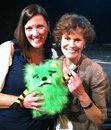Michelle Nelson-Schmidt's Blog, page 2
November 28, 2025
The Hill Abduction: Betty and Barney Hill’s UFO Story
The Betty and Barney Hill abduction story is a famous case from 1961 where a couple in New Hampshire encounters a glowing craft, leading to their mysterious disappearance and supposed alien encounter. Despite their detailed account, government secrecy and skepticism during the Cold War era fueled doubts, causing many to dismiss their experience. This case remains one of the most influential in UFO history, and its story continues to inspire curiosity—if you want to know more, there’s much to uncover.
Key TakeawaysBetty and Barney Hill’s 1961 abduction is the first widely publicized case of alien contact in the U.S.The couple reported encountering a glowing craft and experiencing memory loss under hypnosis.Official secrecy during the Cold War led to skepticism and suppressed details surrounding their story.The case significantly influenced UFO culture and public perception of extraterrestrial encounters.It remains a foundational event in UFO research, highlighting issues of government secrecy and witness credibility.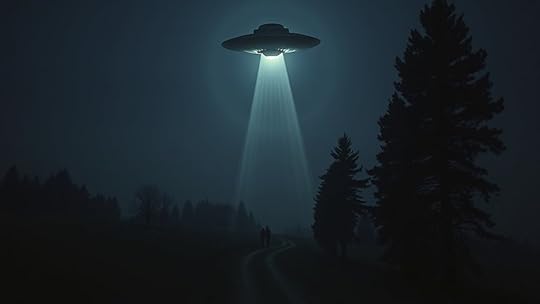
On September 19, 1961, Betty and Barney Hill’s routine drive through rural New Hampshire took an extraordinary turn when they encountered a UFO and experienced what would become one of the most famous alien abduction stories in history. As they drove along a lonely stretch of road, they noticed a strange, glowing craft hovering nearby. What began as curiosity quickly turned into a shared sense of fear and confusion. Over the following days, Betty and Barney reported their experience, but what they didn’t realize at the time was the extent to which government secrecy would later influence their story. During the Cold War era, the U.S. government maintained tight control over information related to extraterrestrial contact, often dismissing or suppressing reports that suggested alien encounters. The Hill case became a prime example of this, with authorities reportedly discouraging further investigation and questioning the credibility of their account.
As the story gained attention, it became clear that government secrecy played a significant role in shaping public perception of UFO phenomena. The government’s approach was often to minimize or ridicule reports of extraterrestrial contact, fueling skepticism and making it difficult for witnesses like Betty and Barney to find support. Despite their detailed account and the emotional toll it took on them, official channels remained dismissive, suggesting that their memories might have been distorted or influenced by stress and fatigue. This secrecy created a barrier that kept many details hidden from the public, fueling conspiracy theories about what the government knew regarding extraterrestrial contact and whether they were actively hiding alien visitors. Furthermore, the influence of government secrecy has persisted, affecting how UFO stories are investigated and understood today.
The Hill case also raised questions about the broader implications of government secrecy. If authorities were concealing information about extraterrestrial contact, it suggested that the government might have been aware of more than they admitted—possibly even involved in secret dealings or cover-ups. For you, this history underscores how government secrecy can obscure the truth and complicate efforts to understand encounters with UFOs. It fuels the suspicion that some stories are kept from the public eye, whether to protect national security or to prevent panic. The Hill case remains a powerful reminder of how government opacity can influence the narrative, making it difficult to distinguish fact from fiction when it comes to alien encounters. Ultimately, Betty and Barney’s experience challenged the official silence, pushing the conversation about UFOs and extraterrestrial contact into the public eye.
Frequently Asked QuestionsWere Betty and Barney Hill’s Claims Ever Officially Verified?You should know that Betty and Barney Hill’s claims were never officially verified, despite intense interest. Scientific skepticism persists because no conclusive evidence supports their story, and official verification remains elusive. While their experience remains a compelling case in UFO lore, the lack of verifiable proof keeps it in the sphere of personal testimony rather than confirmed fact. If you’re exploring UFO history, understand that official verification has yet to be achieved.
How Did Their Abduction Influence UFO Research and Culture?Their abduction considerably impacted UFO cultural impact by popularizing the idea of alien encounters and influencing media portrayals. You’ll find that it also shaped research methodologies, prompting investigators to adopt more structured interview techniques and psychological assessments. This case encouraged skeptics and believers alike to question the nature of UFO sightings, fostering a more serious and systematic approach to studying UFO phenomena while embedding abduction narratives into mainstream culture.
Did They Experience Any Long-Term Psychological Effects?You might feel like a storm has passed, but the clouds of post-abduction trauma lingered for Betty and Barney. They experienced long-term psychological effects, including memory repression and emotional distress. Their memories, buried like treasures in a shipwreck, resurfaced over time, causing confusion and anxiety. Their story highlights how such extraordinary experiences can leave deep, lasting scars on a person’s psyche, shaping their lives long after the event.
What Are the Main Skeptics’ Arguments Against Their Story?Skeptics argue that Betty and Barney Hill’s story might be a hoax, citing inconsistencies in their accounts and possible suggestibility. They also believe memory repression could play a role, as traumatic events sometimes lead to suppressed memories that resurface later. Critics suggest their narrative may have been influenced by popular media or personal biases, making the story less credible and raising doubts about its authenticity.
Have Other Similar Abduction Cases Been Linked to Theirs?You’ll find that many alien encounters share striking abduction parallels, making their stories seem like peas in a pod. Similar cases, such as the Betty and Barney Hill incident, include the Travis Walton and the Allagash abductions. These stories often feature common themes like missing time, strange implants, and telepathic communication, which fuel speculation that these encounters might be part of a larger pattern rather than isolated incidents.
ConclusionAs you reflect on Betty and Barney Hill’s story, it’s hard not to wonder about coincidence. Was it simply chance that their lives intertwined with such a mysterious encounter? Or did fate guide them to share their experience, sparking a UFO legend? Sometimes, the universe seems to align just right, making you question what’s truly out there. Perhaps, in the end, it’s those small, strange coincidences that keep the mystery alive.
The Monster of Florence: Unsolved Serial Killings
The Monster of Florence was an infamous serial killer terrorizing Italy’s Tuscany region from 1974 to 1985, with his identity remaining a mystery. Media coverage fueled public fear and created a media spectacle that complicated the investigation. Psychological profiling was used to understand the killer’s mindset, but conflicting theories and false leads persisted. If you want to uncover the mysteries behind this famous case and learn more about its unresolved nature, there’s much more to explore.
Key TakeawaysThe Monster of Florence was an unidentified serial killer active from 1974 to 1985, with murders remaining unsolved.Psychological profiling and forensic analysis aimed to identify the suspect but yielded conflicting theories.Extensive media coverage fueled public fear, influenced investigations, and led to conspiracy rumors.Despite decades of efforts, the killer’s true identity remains unknown, leaving the case unresolved.The case exemplifies media’s role in shaping criminal investigations and public perception of serial crimes.
The Monster of Florence is the nickname given to an unidentified serial killer who terrorized the Italian city of Florence and its surrounding countryside between 1974 and 1985. During this period, you might have heard the chilling stories in the media, which kept the public on edge and fueled a sense of dread. The media coverage was relentless, sensationalizing the murders and creating a climate of fear that persisted for years. The case drew intense attention from journalists, investigators, and the public, all enthusiastic to uncover the identity of the elusive killer. As a result, the story became a media spectacle, often blurring the lines between fact and speculation.
One of the most significant tools used in understanding the killer’s behavior was psychological profiling. Forensic psychologists and criminologists analyzed the crime scenes, victims, and patterns to develop a profile of the suspect. They looked for common traits—such as the killer’s possible motivations, psychological makeup, and behavioral tendencies. This profiling aimed to narrow down suspects and understand the killer’s mindset. Yet, despite these efforts, the case remained unsolved for years, with many profiles offering conflicting theories. Some believed the killer was a lone wolf with deep psychological issues, while others suspected a more organized or even institutional involvement. The profiling process was complicated by the brutality of the murders and the lack of clear evidence linking the crimes to a specific individual. Additionally, psychological profiling played a crucial role in shaping investigative strategies, although it was not always definitive.
Psychological profiling aimed to uncover the killer’s motives and traits, but conflicting theories kept the case unresolved.
The media’s portrayal of the case played a essential role in shaping public perception. Sensational headlines, speculation about possible suspects, and frequent updates kept the case in the spotlight. This constant coverage put pressure on law enforcement to catch the killer quickly, often leading to missteps and false leads. The media also fueled rumors, some of which suggested connections to powerful figures or secret societies, adding layers of conspiracy to the already complex case. As a result, the public’s fear grew, and the hunt for the Monster of Florence became a national obsession.
Throughout the years, the combination of psychological profiling and media coverage kept the case alive in the public consciousness. Investigators worked tirelessly, but the killer eluded capture, leaving behind a trail of questions that remain unanswered. The case exemplifies how media-driven narratives and psychological insights can shape the course of an investigation, sometimes helping and sometimes hindering the pursuit of justice. Today, the true identity of the Monster of Florence remains a mystery, but the story continues to fascinate and haunt those who seek answers.
Frequently Asked QuestionsWere Any Suspects Ever Conclusively Proven Guilty?You might wonder if any suspects were conclusively proven guilty in the Monster of Florence case. Despite extensive investigations, forensic evidence and suspect profiles never definitively linked anyone to the crimes. Authorities focused on several individuals, but no one was formally convicted, leaving the case unresolved. It’s a haunting reminder that even with modern forensic methods, some mysteries remain unsolved, and justice isn’t always achieved.
What Was the Killer’s Exact Modus Operandi?Coincidences often reveal patterns, and in this case, the killer’s modus operandi involved stalking victims in isolated areas, shooting them at close range, then abandoning their bodies nearby. The serial killer profile suggests someone meticulous and methodical. Forensic evidence—such as ballistic analysis and DNA—indicates he targeted couples, often using a firearm, and left little evidence behind, making it challenging to pinpoint his exact method.
Did the Police Cover up Any Evidence?You might suspect that the police covered up evidence through evidence tampering and police misconduct. There are claims that authorities intentionally withheld or manipulated evidence to protect certain individuals or mislead investigations. These actions could have hindered justice and allowed the killer to remain at large longer. While some believe misconduct occurred, definitive proof remains elusive, fueling ongoing debates about the integrity of the investigation.
Are There Any Recent Developments in the Case?You might find it surprising, but recent developments in the case have emerged due to forensic advancements that re-examine old evidence. While media influence keeps the story alive, new DNA analysis and digital forensics suggest fresh leads. Although no definitive resolution has occurred, these coincidences could finally shed light on the mystery, giving hope that the long-standing case might soon be solved as technology continues to evolve.
How Did the Murders Impact Local Communities Long-Term?You see that the murders caused lasting community trauma, leaving residents in fear and mistrust. The psychological effects linger, as many feel unsafe even years later. Local communities often experience increased anxiety, vigilance, and a sense of vulnerability. These events disrupt daily life, foster suspicion, and create a collective sense of loss. Over time, the trauma shapes community identity, making healing a slow process that requires ongoing support and reassurance.
ConclusionAs you step back from the shadowed streets of Florence, the chilling echoes of the Monster linger in your mind. The darkened alleyways, once silent, now seem to whisper secrets of unsolved horrors. You feel the weight of unanswered questions pressing on your chest, like a cold breeze slipping through cracks. Though the case remains shrouded in mystery, the haunting images of that elusive creature stay with you, a reminder that some monsters never truly disappear.
The Alicanto: Chilean Bird of Gold
The Alicanto is a legendary Chilean bird famed for its glowing, gold feathers that light up the dark desert skies of the Atacama. Rooted in indigenous stories, it symbolizes hope, prosperity, and guidance for local people, especially miners and hunters seeking wealth. Its shimmering feathers catch the night moonlight, making it a mystical icon representing the connection between nature, fortune, and spiritual strength. Want to uncover more about this enchanting creature’s fascinating lore and cultural significance?
Key TakeawaysThe Alicanto is a mythical Chilean bird known for its luminous, golden feathers that illuminate the dark desert skies.Rooted in indigenous folklore, it symbolizes hope, guidance, and prosperity for the people of northern Chile.It feeds on gold and minerals, representing the pursuit of wealth and the dangers of greed.The bird’s shimmering appearance makes it a cultural icon inspiring art, stories, and songs in Chile.Sightings of the Alicanto are considered messages from the universe, linking natural mysticism and cultural identity.
Have you ever heard of the Alicanto, the legendary bird said to illuminate the dark skies of the Chilean desert? This mythical creature has captivated local folklore for centuries, its origins shrouded in myth and mystery. According to legend, the Alicanto’s mythical origins trace back to indigenous stories that blend elements of the natural world with spiritual symbolism. Some tales suggest that it was created by ancient gods or spirits to serve as a guardian or a divine messenger, while others believe it emerged from the desert’s mystical energy itself. Regardless of its origins, the Alicanto embodies a powerful cultural symbolism for the people of northern Chile. It’s seen as a symbol of hope, guidance, and the promise of wealth, often associated with the mineral-rich landscapes of the Atacama Desert. Its shimmering, golden feathers represent prosperity and abundance, making it a creature that’s both revered and feared.
The Alicanto’s cultural symbolism runs deep within local traditions and stories. To the indigenous Atacameños and other desert communities, spotting this bird isn’t just a visual marvel; it’s a sign from the universe, a message promising fortune or warning of danger. Because it’s said to feed on gold and other minerals, the Alicanto also symbolizes the elusive pursuit of wealth and the dangers that come with greed. In many stories, hunters or miners seek the bird, hoping to find its treasure-filled feathers, though few ever succeed. Its luminous appearance in the night sky makes it a mystical beacon for those charting the harsh desert landscape, often serving as a reminder of the divine forces believed to govern their world. Interestingly, the Alicanto’s is what gives it its unique, luminous feathers that catch the light in the desert night, making it a fascinating subject of local lore. Over time, the Alicanto has become a cultural icon, inspiring local art, folklore, and even modern interpretations of Chilean identity. Its image appears in paintings, stories, and songs, reinforcing its significance as a symbol of resilience and hope amid the desert’s harsh conditions.
The myth of the Alicanto persists because it resonates with the human desire for prosperity and guidance. Its mythical origins and layered cultural symbolism continue to shape how people see the desert and their place within it. Whether seen as a spiritual guardian or a creature of legend, the Alicanto embodies the mystical connection between nature, wealth, and cultural identity. It reminds you that even in the darkest, most desolate places, there’s hope and beauty — a shining light that beckons, much like the mythical bird itself.
Frequently Asked QuestionsAre Alicantos Real or Mythical Creatures?You might think alicantos are mythical creatures, but they’re deeply rooted in Chilean folklore as cultural symbolism. While there’s no scientific proof of their existence, stories depict these birds as magical beings that guide miners to gold. Their shimmering feathers and mysterious nature make them seem like mythical creatures, but for locals, they represent hope and good fortune, blending legend with cultural significance in Chilean tradition.
What Is the Origin of the Alicanto Legend?Like a whisper from the Andes, the alicanto legend stems from mythical origins rooted in Chilean culture. You learn that it symbolizes wealth and guidance, often linked to the land’s mineral riches. This creature’s story reflects cultural symbolism, representing hope and prosperity amid the harsh landscape. Its shimmering feathers evoke the country’s gold deposits, making the alicanto a cherished myth that has been passed down through generations.
How Do Locals Traditionally View the Alicanto?Locals see the alicanto as a symbol of good fortune and hope, deeply rooted in local folklore. You might hear stories where the bird’s golden glow represents prosperity, guiding miners and dreamers alike. It holds cultural symbolism as a mystical creature that brings luck and wealth, inspiring respect and awe. Many believe that spotting an alicanto is a sign of upcoming success, making it a cherished part of their cultural heritage.
Are There Any Known Sightings of the Alicanto Today?You won’t find confirmed urban legends or wildlife sightings of the alicanto today, as it remains a legendary creature rather than a confirmed species. People still share stories about glimpses of this mythical bird, but no verified sightings have been documented. Its reputation endures through folklore and cultural tales, keeping the mystique alive even though no concrete evidence exists. This legendary status fuels curiosity and keeps the alicanto a symbol of Chilean myth.
How Has the Myth of the Alicanto Influenced Chilean Culture?You see the alicanto’s mythical symbolism reflecting Chilean dreams of fortune and hope, deeply woven into cultural significance. Its legend inspires artists, writers, and villagers alike, representing the pursuit of wealth and the allure of the unknown. While it’s a myth, it fuels national identity and resilience, reminding you that even in darkness, beauty and prosperity can shine—a symbol that guides and motivates through Chile’s rich cultural tapestry.
ConclusionAs you imagine the Alicanto’s shimmering feathers, you see its beauty and mystery, its legend and lore. You hear the tales of its gold, its guiding light, its elusive presence. You feel the wonder it sparks, the fascination it ignites, the stories it leaves behind. The Alicanto isn’t just a bird; it’s a symbol of Chile’s rich history, a beacon of hope and myth wrapped in feathers and flight, forever enthralling your imagination.
Monsters in Medieval Bestiaries: Symbolism and Science
In medieval bestiaries, monsters symbolize moral and spiritual truths, blending myth with natural history. Creatures like dragons and unicorns reflect virtues, vices, and societal fears, serving as allegories to teach moral lessons. While some animals have fantastical traits inspired by folklore, they also embody cultural beliefs about the natural world and divine power. If you keep exploring, you’ll discover how these legendary monsters reveal deeper insights into medieval worldview and morality.
Key TakeawaysMonsters in bestiaries symbolize moral virtues or vices, serving as allegories for spiritual and societal lessons.They blend myth, folklore, and natural observations, reflecting medieval interpretations of the natural world and morality.Creatures like dragons and griffins embody chaos, divine power, or protection, symbolizing broader spiritual and moral concepts.Bestiaries use fantastical attributes to explain natural phenomena and reinforce societal fears and values.The combination of symbolism and pseudo-science in bestiaries illustrates medieval efforts to understand and moralize the natural world.
Medieval bestiaries are fascinating collections that blend natural history with allegory, showcasing a wide array of creatures—many of which are monsters or mythical beings. As you explore these texts, you’ll notice that each creature is more than just a biological curiosity; it’s a symbol rooted in medieval folklore and mythological symbolism. These bestiaries serve as a mirror to medieval society’s beliefs, fears, and moral lessons, turning animals and monsters into visual stories that communicate complex ideas.
Medieval bestiaries combine natural history with allegory, revealing society’s beliefs, fears, and moral lessons through legendary creatures.
You’ll find that many creatures are used to embody virtues or vices, conveying moral lessons through vivid allegory. For example, the unicorn, a creature often depicted as pure and elusive, symbolizes innocence and divine power in Christian thought. Its mythological symbolism extends beyond the creature itself, representing the soul’s purity and the divine mystery of Christ. Similarly, the dragon, a common monster in bestiaries, isn’t just a fearsome beast but also a symbol of chaos, evil, and the devil, reflecting the medieval struggle between good and evil. These creatures are deeply embedded in medieval folklore, where their stories and attributes serve to teach and reinforce societal values.
Your journey through these bestiaries reveals how medieval people interpreted the natural world through myth and legend. Many animals were thought to possess supernatural qualities, or they were linked to stories from biblical or pagan traditions. For instance, the griffin, with the body of a lion and the head and wings of an eagle, embodies divine power, courage, and protection—attributes that symbolized royal authority and divine right. These mythological symbols aren’t arbitrary; they’re carefully chosen to communicate spiritual and moral truths, often serving as metaphors for human virtues or vices. Additionally, the symbolic significance of these creatures often reflected the medieval worldview, where natural phenomena and myth intertwined to create a rich tapestry of moral and spiritual meaning.
Furthermore, medieval bestiaries often incorporated stories from folklore that explained the origins or behaviors of these creatures, blending scientific observation with myth. You might see a description of a real animal, like a lion, paired with fantastical attributes that elevate it beyond its natural form. This fusion of folklore and myth creates a layered understanding of the world, where monsters serve as allegorical devices rather than mere biological entities. By understanding these mythological symbols, you gain insight into how medieval societies made sense of their universe, emphasizing moral lessons, spiritual truths, and cultural values through the fascinating lens of legendary creatures.
Frequently Asked QuestionsHow Did Medieval Bestiaries Influence Modern Zoology?Medieval bestiaries shaped modern zoology by blending myth and reality, inspiring curiosity and investigation. You see, they laid the groundwork for cryptozoology theories, encouraging scientists to explore unknown creatures. While some monsters were symbolic, others prompted real research into animal behaviors and habitats. Today, you can trace how these stories sparked scientific inquiry, helping distinguish myth from reality and advancing our understanding of the natural world.
Were There Real Animals Mistaken for Monsters in Bestiaries?In medieval bestiaries, you’ll find that some mythical animals, like unicorns or dragons, were based on real animals misunderstood due to zoological inaccuracies. These mistaken identities often led to mythical creatures being included as if they were real, blending science and legend. As a result, you might wonder if some monsters were simply misinterpreted or exaggerated versions of actual animals, reflecting the limited zoological knowledge of the time.
How Did Cultural Differences Shape Monster Symbolism Across Regions?Cultural perceptions heavily influence how you interpret monsters, shaping regional symbolism in bestiaries. In some areas, monsters symbolize moral lessons, fear, or divine lessons, while in others, they represent chaos or the unknown. These differences reflect each region’s unique beliefs, environment, and social structures. As a result, regional symbolism varies widely, allowing you to see monsters as reflections of local fears, values, and cultural narratives rather than just mythical creatures.
What Role Did Religion Play in Depicting Monsters?Imagine monsters as divine messengers in disguise; religion deeply influences their depiction. You see, religious symbolism and spiritual significance shape how medieval artists portrayed these creatures, often representing sin, evil, or divine tests. They serve as moral lessons or warnings rooted in faith, making monsters more than mere beasts—they embody spiritual truths. By doing so, religion transforms monsters into symbols of moral struggle, emphasizing their role in guiding believers toward spiritual enlightenment.
Are There Surviving Medieval Bestiaries Accessible Today?Yes, you can access surviving medieval bestiaries today through modern collections and digital archives. These ancient manuscripts, often preserved in museums and libraries, offer a fascinating glimpse into medieval beliefs and symbolism. Many institutions have digitized these texts, making them available online. So, you can explore these historical bestiaries, study the illustrations and descriptions, and appreciate their cultural and scientific significance from the comfort of your home.
ConclusionAs you close the pages of these medieval bestiaries, remember that monsters aren’t just creatures of myth—they’re mirrors reflecting fears, morals, and the unknown. Just as shadows give form to darkness, these beasts symbolize deeper truths about human nature and spirituality. By exploring their stories, you reveal a world where science and symbolism intertwine, inviting you to see beyond the surface and confront the mysteries lurking within ourselves. After all, isn’t every monster a mirror of our own fears?
November 27, 2025
The Hampstead Mystery: Cloaked Chimney Sweeps and Rumor
In Hampstead, mysterious cloaked chimney sweeps have been spotted wandering the foggy streets, often vanishing suddenly and fueling local tales of supernatural activity. These silent figures, dressed in dark clothing, appear sporadically over the years, sparking rumors that they are spirits, relics of old traditions, or part of secret rituals. The legend continues to intrigue residents and visitors alike. If you want to uncover more about these ghostly sightings and their possible origins, keep exploring the story.
Key TakeawaysCloaked chimney sweeps are mysterious figures seen wandering Hampstead streets at night, often silhouetted against foggy skies.Local legends suggest they may be spirits, remnants of old traditions, or connected to secret societies.Sightings are sporadic, with figures disappearing or vanishing around corners, fueling supernatural speculation.Despite investigations and modern efforts to improve visibility, no conclusive evidence has been found.The legend remains a captivating part of Hampstead folklore, symbolizing fears of the unknown and preserving local mystery.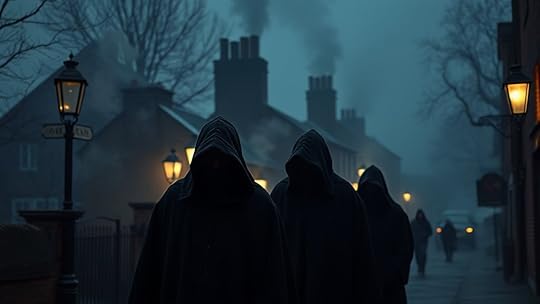
Have you ever heard of the Hampstead Mystery, a puzzling event that has left locals and investigators alike scratching their heads? It’s a story shrouded in secrecy, woven into the fabric of local folklore and urban legends that have persisted for decades. The mystery revolves around cloaked chimney sweeps seen wandering the streets late at night, their figures often silhouetted against the foggy London sky. These sightings, reported sporadically over the years, have become the stuff of local legend, fueling speculation and curiosity among residents and visitors alike.
Many believe that these cloaked figures are remnants of an old, forgotten tradition or perhaps the spirits of chimney sweeps from a bygone era. The images of shadowy figures, dressed in dark clothing and moving silently through the dimly lit streets, evoke a sense of mystery and intrigue. Some locals claim that they’ve seen these figures disappearing around corners or vanishing into thin air, adding an almost supernatural layer to the story. Over time, stories have grown more elaborate, with some suggesting these chimney sweeps are connected to secret societies or hidden rituals that once took place in Hampstead’s alleyways.
Shadowy chimney sweeps, cloaked and silent, fueling tales of secret societies and hidden rituals in Hampstead’s foggy streets.
The lore surrounding the cloaked chimney sweeps has become an integral part of Hampstead’s local culture. It’s a story passed down from generation to generation, often told around crackling fires or during quiet evenings. These tales have become a staple of local folklore, blending fact and fiction in a way that keeps the mystery alive. The urban legends have taken on a life of their own, turning the quiet streets into a stage for ghostly apparitions and clandestine activities. Many residents have shared their own encounters, describing fleeting glimpses and strange sounds that seem to confirm the stories, even if only anecdotally.
Despite numerous investigations and countless theories, no one has conclusively proven who these cloaked figures are or what they’re doing. Interestingly, modern air purification technologies and methods have been used to clear the fog and improve visibility in the area, but the mystery remains unsolved. The story persists because it taps into a universal fear of the unknown and the unseen. It’s a ghostly echo of the past, a reminder of the many secrets that still lurk in the shadows of Hampstead’s historic streets. Whether you believe in ghosts or simply enjoy a good tale, the Hampstead Mystery continues to captivate imaginations, keeping the legend alive as a mysterious chapter in the neighborhood’s local folklore.
Frequently Asked QuestionsAre There Any Recent Sightings of Cloaked Chimney Sweeps?There haven’t been any recent sightings of cloaked chimney sweeps, but urban folklore keeps the legend alive with ghost sightings reported sporadically. You might find stories circulating online or in local conversations, suggesting some believe in their mysterious presence. While no concrete evidence exists, these tales continue to intrigue, fueling curiosity and speculation about whether these ghostly figures still walk the streets or are just remnants of local myth.
What Are the Origins of the Hampstead Chimney Sweep Rumors?You might think these chimney sweep rumors are modern, but they trace back to old urban legends rooted in historical folklore. Stories of cloaked figures emerged in Hampstead, blending local history with myth, creating an air of mystery. These tales likely grew from fears and superstitions about chimney sweeps, often seen as omens or supernatural messengers, fueling the legend that still lingers today, enthralling imaginations and sparking curiosity about what’s real.
Have Any Official Investigations Confirmed the Mystery?No, official investigations haven’t confirmed the Hampstead chimney sweep mystery. Urban legends like these often stem from folklore origins and local stories, which can be compelling but lack concrete proof. You might find that authorities and experts view these tales skeptically, considering them more as intriguing folklore rather than verified facts. So, while the rumors persist, there’s no official confirmation backing the mysterious cloaked chimney sweeps.
How Do Locals Perceive the Chimney Sweep Legends?You’ll find that locals see the chimney sweep legends as an intriguing part of their community folklore. Many believe these stories add a mysterious charm to Hampstead, fostering a sense of shared history and intrigue. While some dismiss them as simple myths, others embrace the legends, seeing them as a unique tradition that enriches local culture. Overall, the community perceives these stories as an enduring and fascinating aspect of their identity.
Are There Any Similar Mysteries Elsewhere in London?If you’re curious about other urban legends in London, you’ll find stories that weave folklore origins into the city’s fabric. Places like Tower Hill and the East End are riddled with mysteries—phantom figures, ghostly sightings, and secret societies—that echo the intrigue of the Hampstead legends. These tales act as the city’s heartbeat, blending history and myth into a tapestry that beckons explorers to uncover its hidden secrets.
ConclusionAs you piece together the Hampstead mystery, remember it’s like chasing shadows in a foggy night—elusive and ever-changing. The cloaked chimney sweeps and whispered rumors swirl around you, tempting you to believe in secrets hiding just beyond reach. But sometimes, the truth remains a shimmering mirage on the horizon, dancing just out of grasp. Keep your eyes sharp and your mind open, for the story’s magic lies in its mystery, not its answers.
The Beast of Gévaudan Revisited With Modern Bite‑Mark Science
Using modern bite-mark science, researchers now re-examine the Beast of Gévaudan’s legend by analyzing old bite marks with advanced techniques like DNA testing, digital imaging, and forensic profiling. These methods help identify animals involved, distinguish authentic wounds from folklore, and clarify the creature’s true nature. While challenges remain due to degraded evidence, ongoing technological progress promises fascinating insights into this historical mystery—discover more as you explore recent scientific breakthroughs.
Key TakeawaysModern bite-mark analysis applies forensic odontology and DNA techniques to re-examine historical evidence of the Beast.Advances in imaging and micro-spectroscopy help identify species and distinguish genuine bite marks from folklore.Degraded DNA samples from the 18th century pose challenges but can still provide insights into possible suspects or animals.Reassessment of bite marks can clarify whether the creature was a wolf, hybrid, or mythological entity.Emerging forensic technologies enhance understanding of the Beast of Gévaudan’s true nature, blending science with historical folklore.Historical Accounts and Early Descriptions of the Beast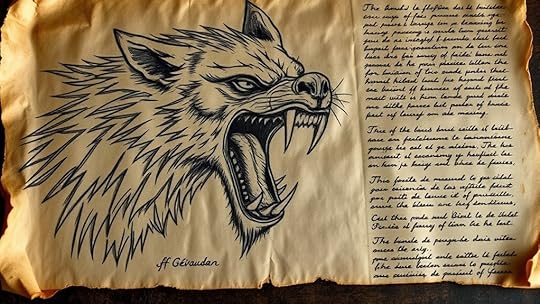
Historical accounts of the Beast of Gévaudan date back to the late 18th century, when villagers first reported encounters with a mysterious and ferocious creature terrorizing the region. These early descriptions often blend reality with folklore narratives, portraying the beast as a mythical creature beyond normal comprehension. Local tales depict it as a supernatural being, fueling fears rooted in ancient mythologies of mythical creatures lurking in the shadows. Eyewitness reports describe a beast with extraordinary strength, swift movements, and a terrifying appearance, often exaggerated by storytelling. These stories spread quickly, reinforcing the creature’s legendary status. As folklore narratives evolved, so did the creature’s image, transforming from a real animal into an almost mythical figure that haunted the collective imagination of Gévaudan’s inhabitants.
Traditional Theories and Speculations About Its Identity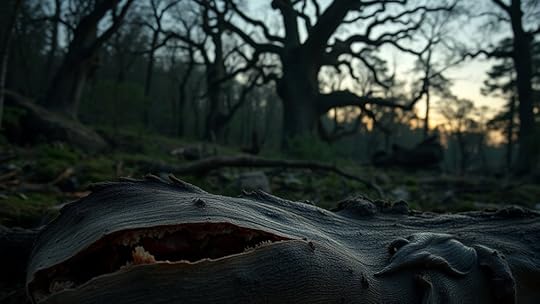
Many theories have been proposed to explain the true identity of the Beast of Gévaudan, with enthusiasts and researchers alike offering a range of speculations. Some believe it was a mythical creature from folklore origins, such as a giant wolf or a demonic entity, fueled by local legends. Others suggest it might have been a hybrid or a pack of wolves acting abnormally due to disease or human interference. Folklore origins often link the beast to stories of supernatural monsters or cursed beings that terrorized the region. These traditional theories reflect the fears and beliefs of the time, blending myth and reality. Despite modern science, many continue to be captivated by these folklore-inspired ideas, which help preserve the mystique surrounding the legendary creature.
The Role of Bite Marks in Forensic Science
Bite marks play a essential role in forensic science by providing tangible evidence that can link a suspect to a crime scene or victim. Through bite mark analysis, experts compare the unique pattern of teeth impressions to suspect dental profiles. Modern techniques also incorporate DNA analysis from saliva traces left in the bite area, increasing accuracy. These methods help establish identification and strengthen case evidence. When examining bite marks, forensic odontologists look at factors like size, shape, and alignment. Advances in digital imaging enable detailed comparisons, making it easier to distinguish authentic bite marks from false or coincidental impressions. Overall, bite marks serve as fundamental clues, combining traditional analysis with DNA evidence to build stronger cases.
Unique dental patterns aid identificationDNA analysis enhances accuracyDigital imaging improves comparisonsRecent Advances in Analyzing Old Bite-Related Evidence
Advances in forensic technology now allow investigators to extract valuable information from bite-related evidence that is decades old. Techniques like high-resolution imaging, DNA analysis, and micro-spectroscopy enable scientists to analyze ancient samples with unprecedented accuracy. This progress helps distinguish real animal bites from mythical creatures often featured in folklore analysis, clarifying historical accounts. By examining bite marks and residue, researchers can better identify the species involved, even when evidence is fragmented or degraded. These methods reduce reliance on assumptions rooted in folklore or legend, sharpening scientific understanding. As a result, you can now approach old cases, like those surrounding the Beast of Gévaudan, with fresh insights, helping to separate fact from myth and providing a clearer picture of the true events behind legendary stories.
Case Studies: Re-Examining Old Bite Mark Evidence From Gévaudan
Re-examining the old bite mark evidence from Gévaudan offers a unique opportunity to clarify historical accounts and separate fact from myth. By applying modern techniques like DNA analysis and behavioral profiling, you can evaluate the authenticity of past claims. These case studies reveal whether bite marks truly match known predators or if evidence was misinterpreted.
DNA analysis helps identify species and individual animals, ruling out or confirming suspected predators.Behavioral profiling offers insights into animal behavior that could explain attack patterns.Reassessment of historical bite marks can challenge long-held legends or support factual accounts.Re-examining Gévaudan’s bite marks clarifies myths using DNA and behavioral analysis.
Through these methods, you gain a clearer understanding of what really happened, shifting the narrative from legend to scientific fact.
Scientific Discoveries and Their Impact on the Legend
Recent scientific discoveries have considerably reshaped our understanding of the Gévaudan legend, shifting it from myth to evidence-based history. These findings reveal how myth evolution reflects changing perceptions and societal fears, rather than a single monstrous creature. Modern analysis, such as bite-mark science and animal studies, challenges the idea of a supernatural beast, suggesting instead that a large predator or multiple animals caused the attacks. This scientific perspective influences cultural influence, helping us see the legend as a product of its time—shaped by fear, storytelling, and social dynamics. By grounding the story in scientific evidence, you can better appreciate how folklore evolves and how historical narratives are shaped by both mythic elements and real-world events.
Limitations and Challenges of Applying Modern Science to Historical Cases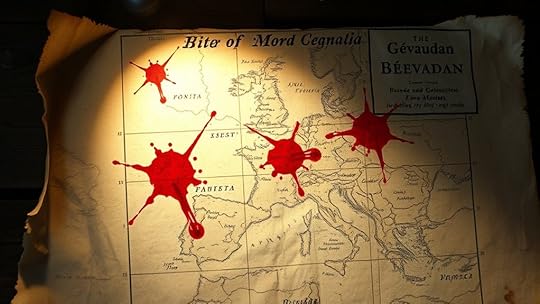
Applying modern science to the Gévaudan case faces significant hurdles due to gaps and biases in the available evidence. You’ll find that technological limitations still restrict definitive analysis of historical data. These challenges make it difficult to draw concrete conclusions about what truly happened.
Evidence Gaps and BiasesDespite advances in forensic science and historical analysis, significant gaps and biases remain when applying modern methods to cases like the Beast of Gévaudan. Cultural biases can skew interpretations, making certain explanations seem more plausible than others. Eyewitness reliability is often questionable, especially when memories fade or become influenced by local legends. These issues can lead to misidentification or overlooked evidence, hindering a clear understanding of what truly happened. Additionally, incomplete records and inconsistent documentation further limit scientific analysis. Such gaps challenge efforts to reach definitive conclusions about the case’s true nature. Recognizing these biases helps you understand that our current knowledge is shaped by both the limitations of evidence and the cultural context of the time.
Cultural biases influence interpretations of eventsEyewitness accounts may be unreliable or exaggeratedIncomplete or biased records limit scientific analysisTechnological Limitations PersistModern science faces significant challenges when it comes to solving historical cases like the Beast of Gévaudan because the technology available today often cannot be fully applied to old evidence. DNA degradation over time hampers genetic analysis, making it difficult to identify or confirm animal or human remains. Preserved samples are rare, and even when found, they may contain fragmented DNA that resists sequencing. This limits the ability to compare evidence directly to modern species or suspects. Below is a quick overview of these limitations:
ChallengeImpactDNA degradationReduces sample quality, complicates analysisLimited preserved evidenceFewer samples available for testingContamination risksCan skew DNA resultsTechnological sensitivityMay not detect degraded or tiny DNA fragmentsThese hurdles mean we often need to rely on indirect evidence rather than definitive scientific proof.
The Future of Forensic Investigations in Solving Historical Mysteries
Advancements in forensic science are transforming how we approach solving historical mysteries, making it possible to uncover details that once seemed lost to time. You can now leverage DNA analysis to identify individuals or animals involved in past events, even centuries later. Virtual reconstructions allow you to visualize scenes, injuries, or creatures with remarkable accuracy, providing new insights. These tools enable researchers to piece together fragmented evidence and validate hypotheses more confidently. Future forensic investigations may also utilize enhanced forensic databases, improving match accuracy and speeding up discoveries. The combination of molecular techniques and digital modeling opens doors to solving long-standing mysteries. As technology continues evolving, you’ll find yourself capable of unraveling stories hidden within history, bringing clarity and closure to cases once considered unsolvable.
DNA analysis for historical identificationVirtual reconstructions of scenes and injuriesEnhanced forensic databases and modelingFrequently Asked QuestionsHow Reliable Are Bite Mark Analyses in Identifying Specific Animals or Humans?You might wonder about bite mark reliability and forensic accuracy in identifying specific animals or humans. In reality, bite mark analysis has faced significant scrutiny, as it often lacks consistency and scientific validity. Many experts now question its reliability, noting that bite marks can be mistaken or misinterpreted. So, while it can sometimes provide clues, you shouldn’t rely solely on bite mark analysis for definitive identification due to its questionable forensic accuracy.
Can Modern DNA Techniques Be Applied to Old Forensic Evidence From Gévaudan?You can definitely apply modern DNA techniques to old forensic evidence from Gévaudan. Ancient DNA analysis allows you to extract genetic material from degraded samples, giving you clues about the animal involved. Wildlife forensics tools help identify species and even individual creatures. By combining these methods, you can re-examine historical evidence, potentially uncovering new insights into the beast’s true identity and shedding light on this historic mystery.
What Are the Ethical Considerations in Re-Examining Historical Forensic Evidence?When re-examining historical forensic evidence, you need to take into account ethical issues like historical bias and cultural sensitivity. You might uncover new truths, but it’s important to respect the context and avoid distorting history or offending communities involved. Being mindful ensures your research remains respectful and objective, honoring the past while embracing modern science. Balancing scientific curiosity with ethical responsibility helps you uncover facts without causing harm or misinterpretation.
How Do Climate and Environmental Changes Affect Bite Mark Preservation Over Centuries?You might wonder how climate impact and environmental degradation influence bite mark preservation over centuries. Changes in temperature, humidity, and soil conditions can accelerate the deterioration of biological materials, making bite marks less distinct or even erasing them entirely. Environmental degradation can lead to the loss of vital forensic evidence, complicating historical analysis. Understanding these factors helps you assess the reliability of preserved bite marks and the challenges in reconstructing past events.
Could New Scientific Methods Definitively Confirm or Dismiss the Legend of the Beast?They say truth is often stranger than fiction, but new scientific methods could finally cut through cryptozoology debates and folklore skepticism. You might think science can definitively confirm or dismiss the beast’s legend, but history shows legends often resist complete proof. While advanced bite-mark analysis offers clues, it can’t guarantee absolute certainty. Still, it pushes you closer to understanding, transforming myth into knowledge, one discovery at a time.
ConclusionRemember, history often reveals secrets only when we look beneath the surface. By applying modern bite-mark science to the Gévaudan mystery, you can uncover truths long hidden. While science can’t solve every puzzle, it moves us closer to understanding the past’s shadows. As the saying goes, “The past is never dead; it’s not even past.” Keep questioning, and you might just uncover the story behind the legend.
The Beast of Le Gevaudan in Popular Culture
The Beast of Le Gevaudan has deeply influenced popular culture, inspiring stories, movies, and artworks that highlight its terrifying and mythic nature. Many portray it as a supernatural monster or misunderstood creature, blending fear with mystery. Films and literature exaggerate its size, brutality, and supernatural elements to create compelling narratives. If you’re curious about how this legendary beast continues to shape modern storytelling, you’ll find plenty more fascinating details ahead.
Key TakeawaysThe Beast of Le Gevaudan has been depicted in films, books, and TV series as both a terrifying creature and a misunderstood entity.Artistic representations often blend mythic elements with historical accounts, emphasizing its symbolic role in popular culture.Modern adaptations exaggerate the beast’s size, ferocity, and supernatural traits for dramatic storytelling.The legend persists in contemporary media as a symbol of primal fears and the unknown, inspiring new creative works.Cultural references include sculptures, illustrations, and digital art that reinterpret the beast’s mythic and mysterious nature.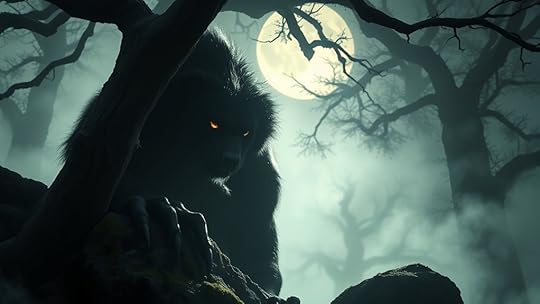
The Beast of Le Gevaudan has captured popular imagination for centuries, inspiring countless stories, movies, and artworks. Its legend has become a symbol of primal fear and mystery, fueling both historical curiosity and creative expression. Over the years, this infamous creature has been shaped by various mythical representations, each adding layers to its enigmatic persona. In folklore, it’s often depicted as a monstrous wolf or a supernatural entity, blending elements of reality and myth to evoke a sense of the uncanny. These mythical representations serve to amplify the beast’s terrifying aura, transforming it from a real predator into a symbol of chaos and the unknown. Such stories are passed down through generations, each adding their own embellishments, making the creature’s legend richer and more enduring. Additionally, modern storytelling techniques utilize targeted storytelling strategies to keep the legend alive and engaging for new audiences.
In modern adaptations, filmmakers, writers, and artists have reimagined the Beast of Le Gevaudan, breathing new life into its story. Movies and television series often portray it as a ferocious, almost supernatural creature, emphasizing its horror and mystery. These adaptations tend to exaggerate its size, intelligence, and brutality to create a more cinematic and gripping narrative. Some portray it as a cursed beast or the result of dark rituals, tying into contemporary themes of fear and superstition. Others explore the creature as a misunderstood victim of circumstance, adding psychological depth to the legend. Literature, too, has embraced the story, with novels and graphic novels exploring different angles—sometimes framing the beast as a force of nature, other times as a symbol of societal fears.
Artistic representations in modern times also play a significant role in perpetuating the legend. Illustrations, sculptures, and digital art depict the beast as both a terrifying predator and a tragic figure. These modern adaptations often reflect contemporary sensibilities, blending historical fact with fictional fantasy. They challenge viewers to reconsider the creature’s story, shifting the focus from mere horror to themes of mystery, myth, and human fear of the unknown. As a result, the Beast of Le Gevaudan continues to evolve in popular culture, from a real historical threat to a mythic figure that embodies primal fears and the allure of the supernatural. Whether through stories, films, or artwork, its legend persists, engaging new generations and reinforcing its place as a powerful symbol of mythic representation.
Frequently Asked QuestionsAre There Any Modern Sightings of the Beast of Le Gevaudan?There haven’t been any confirmed modern sightings of the Beast of Le Gevaudan, but cryptid sightings continue to fuel local folklore. You might hear stories or rumors that keep the legend alive, especially in rural areas where people share tales of strange creatures lurking in the woods. These accounts, though unverified, contribute to modern folklore, keeping the legend of the beast alive in the collective imagination even today.
How Has the Legend Influenced Local Tourism in Le Gevaudan?You’ll find that the legend has remarkably boosted local tourism, with over 200,000 visitors annually exploring Le Gevaudan’s sites. The story’s role in local folklore makes it a key tourist attraction, drawing visitors interested in the mysterious creature’s history. This legend has transformed Le Gevaudan into a mesmerizing destination, with museums and guided tours that celebrate the myth, ensuring the story remains an essential part of the region’s cultural identity and economy.
Were Any Specific Animals Identified as the Real Beast?You wonder if any specific animals were identified as the real beast. While some theoretical explanations suggest a wolf or a pack of wolves, historical accuracy remains uncertain. Many believe the attacks might have involved a large predator or even a wolf-dog hybrid. Despite extensive investigations, no conclusive evidence pinpoints one animal, leaving the true identity of the beast a mystery rooted in legend and speculation.
Has the Story Inspired Any Movies or TV Series?You’ll find that the legend of the Beast of Le Gevaudan has inspired several movies and TV series, often portraying it as a mythical creature. These cinematic adaptations dramatize the tale, blending historical facts with fiction to captivate audiences. As a result, the story continues to influence popular culture, fueling new interpretations and keeping the legend alive through various visual storytelling formats.
What Evidence Supports the Existence of the Beast?You find that historical accounts describe numerous attacks, with victims’ descriptions suggesting a large, aggressive creature. Scientific investigations have analyzed these reports and remains, often proposing that a wolf or wolf-dog hybrid could explain the attacks. Some evidence, like teeth marks and carcass analysis, supports the idea of a formidable predator. However, definitive proof remains elusive, and many details continue to spark debate among researchers.
ConclusionSo, it’s interesting how the legend of the Beast of Le Gevaudan keeps popping up in movies, books, and TV shows, almost as if fate keeps weaving its story into our culture. Maybe it’s no coincidence that, centuries later, we’re still captivated by this mysterious creature, reminding us that some legends never truly fade away. It’s as if history itself nudges us to remember, sparking curiosity that refuses to die out over time.
Giant Cannibal Owls: The Stikini of Seminole Myth
In the Seminole myth, the stikini resembles a giant, menacing owl that embodies primal chaos and societal fears. Unlike the traditional wise owl, these creatures are cannibalistic predators that threaten natural order and safety. They symbolize how familiar protectors can turn terrifying when driven by instinct and desperation. If you keep exploring, you’ll discover how these mythic owls reflect deep-rooted fears and the darker side of nature’s mysteries.
Key TakeawaysThe Stikini are Seminole mythic spirits often depicted as giant, cannibalistic owls embodying primal fears and chaos.They symbolize the dark, destructive side of nature, contrasting with traditional wise owl symbolism.The Stikini are believed to prey on humans, representing societal fears of loss of control and primal instinct.These mythic owls serve as warnings about respecting natural and spiritual boundaries.Their imagery reflects broader themes of chaos, danger, and the breakdown of societal order in Seminole folklore.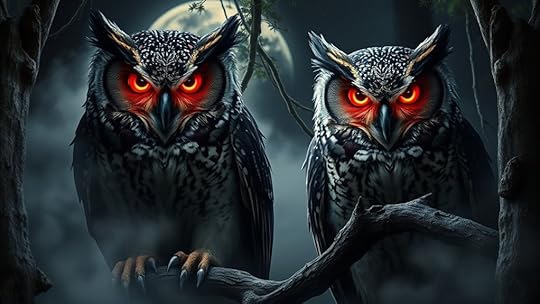
Have you ever wondered what would happen if giant owls turned cannibalistic? It’s a chilling thought, but one that taps into deep-rooted symbolism and mythic fears. Owl symbolism has long been associated with wisdom, mystery, and the supernatural, yet in many cultures, these creatures also represent darker aspects—mythical predators lurking in the shadows. When you picture a giant owl, it might symbolize an ominous force watching silently from above, embodying both knowledge and danger. If these majestic creatures were to become cannibalistic, their image would shift from wise guardians to terrifying predators that threaten everything around them.
In folklore, owls are often depicted as messengers between worlds, guides that help interpret the unseen. But when they turn into mythical predators, that role twists into something far more sinister. Imagine a creature that not only preys on smaller animals but has become large enough to threaten humans. The myth of giant cannibal owls would spread quickly, feeding fears of an apex predator that defies natural order. These owls would symbolize chaos and primal fear, embodying the dark side of nature’s predators. Instead of silent watchers, they become relentless hunters, a nightmare come alive in the darkness.
The idea of cannibalism among these mythical predators complicates their symbolism even further. It suggests a breakdown of natural hierarchy, a creature driven by instinct and desperation rather than wisdom. If you encountered such an owl, it might represent the primal fear of being hunted by something once thought to be benign or protective. The transformation from wise owl to ravenous cannibal underscores how myth can distort reality, turning symbols of insight into symbols of predation and chaos. This shift would make the owl a metaphor for destructive forces lurking beneath the surface of what we believe to be familiar and safe. Additionally, the symbolism of these creatures highlights how myths serve to reflect our deepest fears and societal anxieties about nature’s unpredictability.
Frequently Asked QuestionsAre There Any Eyewitness Accounts of These Giant Owls?You might find some owl sightings and folklore testimonies claiming encounters with these giant cannibal owls, but there’s no verified eyewitness account. People share stories of strange, enormous owls in the woods, often dismissed as folklore, yet some believe these sightings stem from real encounters. While intriguing, these testimonies lack concrete evidence, making the existence of such giant owls more myth than confirmed reality.
How Do the Stikini Legends Differ Among Seminole Communities?You’ll find that the Stikini legends vary across Seminole communities due to cultural variations and regional differences. Some communities emphasize their role as cautionary spirits, warning against certain behaviors, while others focus on their supernatural power and spiritual significance. These stories adapt over time, reflecting local traditions and beliefs. As a result, each community’s version of the myth offers unique insights into their cultural identity and values.
What Are the Symbolic Meanings Behind the Owl’s Cannibal Traits?You see, the cannibal traits of the owl symbolize danger and taboo in the myth. These qualities serve as warnings about respecting spiritual boundaries and the consequences of crossing them. The cannibal symbolism emphasizes the owl’s role as a powerful, fearsome guardian, reminding you of the importance of balance between the spiritual and physical worlds. It’s a vivid symbol of the darker aspects of nature and human behavior.
Are There Similar Mythological Creatures in Other Native American Cultures?Imagine scrolling through ancient scrolls on your tablet—similar mythological parallels exist across Native American cultures. You’ll find owl symbolism representing wisdom and mystery, but also darker traits like death or transformation. Cultures like the Navajo and Apache have mythological creatures with owl traits, sometimes linked to spirits or supernatural events. These parallels highlight shared themes, showing how different tribes interpret the owl’s role in their stories and spiritual beliefs.
How Have These Legends Influenced Local Folklore and Traditions?You see how these legends influence local folklore and traditions by shaping cultural rituals and folklore symbolism. They often serve as warnings or lessons, inspiring stories, dances, or ceremonies that reinforce community values. These myths create a shared identity, connecting people to their history and environment. As a result, the stories of creatures like the Stikini become integral to cultural practices, passing down traditions and preserving cultural heritage through generations.
ConclusionAs you walk through the whispers of Seminole myth, remember the Stikini’s story is a dark mirror reflecting fears of the unknown. These giant cannibal owls are like shadowy guardians of ancient secrets, silently watching from the darkness. Their myth warns you to respect the unseen forces lurking just beyond your sight. In the end, they’re a reminder that some mysteries are better left undisturbed, like stars hidden behind a midnight veil.
The Ijiraq: Inuk Shape‑Shifter That Steals Children
The Ijiraq is a mystical shape-shifter from Inuit folklore that secretly lives in the Arctic snow. It often appears as a human, animal, or even an environment, making it hard to spot. Its main purpose is to abduct children and keep them lost in the wilderness, feeding on their innocence and fear. These stories warn communities of unseen dangers in the icy landscape. If you want to understand this creature’s true significance, there’s more to uncover.
Key TakeawaysThe Ijiraq is a shape-shifting creature from Inuit folklore that abducts children in Arctic regions.It can transform into humans, animals, or environmental forms, making it elusive and difficult to identify.Its primary motive is to keep children lost in the wilderness, feeding on their fear and innocence.The legend serves as a warning to children and communities about the dangers of the Arctic environment.The Ijiraq symbolizes unseen threats, embodying fear and caution in Inuit cultural traditions.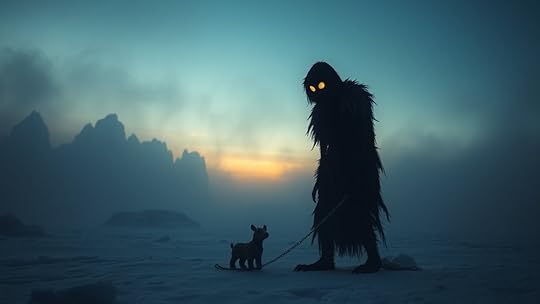
Have you ever heard of the Ijiraq, a mysterious shape-shifter from Inuit folklore known for stealing children? This creature is one of the most intriguing mythical creatures in folklore legends, embodying both fear and fascination. The Ijiraq is said to be a cunning, elusive being that can shift forms, blending seamlessly into the snowy Arctic landscape. Its primary purpose, according to legends, is to abduct children, luring them away into the wilderness where they can never be found again. This chilling tale serves as a cautionary story for parents and communities, warning children to stay close to home and avoid wandering off alone.
In Inuit stories, the Ijiraq is often described as a shape-shifter that can imitate humans, animals, or even the natural environment itself. Its ability to change form makes it incredibly difficult to identify, which adds to its terrifying reputation. The creature’s motives are not entirely malicious; some folklore legends portray it as a guardian of certain sacred sites or a creature that tests humans’ wisdom and vigilance. However, the common theme remains that the Ijiraq preys on children, stealing them away to keep them forever lost in the icy wilderness. This act of kidnapping is often seen as a way for the creature to preserve its own existence, feeding off the fear and innocence of its victims.
The stories surrounding the Ijiraq serve as a reflection of the harsh realities faced by Arctic communities, where dangers lurk in the unforgiving environment. These legends act as warnings to children, urging them to stay close to their families and respect the natural world. The creature’s ability to disguise itself makes it a perfect symbol of the unknown and the unseen threats lurking in the wilderness. For those who believe in these folklore legends, the Ijiraq is not just a myth but a reminder of the importance of caution and awareness in a land where danger can take many forms. Additionally, some stories suggest that the Ijiraq’s presence is linked to cultural preservation and the need to pass down traditional knowledge to younger generations. Its story has persisted through generations, reminding everyone that sometimes, the most frightening threats are those we cannot see or easily understand. Ultimately, the Ijiraq embodies the mysterious power of folklore legends and the enduring human need to make sense of the dangers encountered in the wild, icy landscapes of the Arctic.
Frequently Asked QuestionsAre There Modern Sightings or Encounters With the Ijiraq?You might hear whispers of recent urban legends or modern folklore about encounters with the Ijiraq, but there’s no concrete evidence. Some say locals still tell stories of mysterious figures lurking near the Arctic, especially when children go missing. These tales persist in communities, fueling fears and curiosity. While no verified sightings exist, the legend continues to haunt the imagination, blending ancient myth with contemporary storytelling, keeping the legend alive today.
How Do Inuit Communities Traditionally Protect Children From the Ijiraq?You protect children by using protective talismans, which serve as spiritual shields against the Ijiraq, and by participating in community rituals that reinforce collective safety. While the threat is mythic, these traditions foster unity and vigilance, blending superstition with cultural bonds. These practices, rooted in Inuit belief, help keep children safe by reminding everyone of shared responsibility and spiritual safeguards against unseen dangers.
What Are the Origins and History of the Ijiraq Legend?You should know that the legend of the ijiraq has mythical origins rooted in Inuit storytelling, symbolizing fears and dangers in the harsh Arctic environment. This myth holds cultural significance, serving as a cautionary tale to protect children and reinforce community values. Over generations, the ijiraq story evolved, blending spiritual beliefs with practical lessons, making it a crucial part of Inuit cultural heritage and storytelling traditions.
Are There Similar Shape-Shifting Legends in Other Indigenous Cultures?Yes, you’ll find similar mythical creatures across many indigenous cultures, embodying powerful cultural symbolism. For instance, Native American legends include shape-shifters like skinwalkers, while Australian Aboriginal stories speak of mimic spirits. These beings often represent lessons, fears, or spiritual truths, revealing deep cultural values. By exploring these stories, you gain insight into how different societies use mythical creatures to explain the unknown and preserve their cultural identity.
How Has the Ijiraq Myth Influenced Inuit Art and Storytelling?You see the Ijiraq myth deeply influencing Inuit art and storytelling through spiritual symbolism and artistic representations. For example, artists create carvings and paintings depicting the Ijiraq as a mysterious figure, emphasizing themes of caution and respect for nature. These works help pass down stories, reminding communities of cultural values while inspiring modern interpretations. This myth fosters a rich connection between spiritual beliefs and visual storytelling in Inuit culture.
ConclusionAs you close this story, remember the ijiraq as a shadow lurking behind the veil of innocence. It symbolized the fragile boundary between safety and danger, truth and illusion. When children disappear, it’s like the light inside them is stolen, leaving only echoes of what once was. Be vigilant, for sometimes the greatest threats hide behind familiar faces, reminding us that even hope can be masked by darkness. Stay watchful, and trust your instincts.
November 26, 2025
The Monster as Metaphor: Representations of Social Fears
Monsters act as powerful metaphors for social fears, embodying collective anxieties and moral concerns in ways that reflect cultural values. They externalize worries about outsiders, chaos, or societal threats, helping communities process and confront these issues symbolically. You’ll see how monsters serve as reflections of deeper fears, offering warnings or lessons about morality and societal stability. If you keep exploring, you’ll discover even more ways monsters shape and reveal cultural and psychological landscapes.
Key TakeawaysMonsters symbolize societal fears and anxieties, embodying threats like outsiders, chaos, or moral decay.They serve as external projections of internal individual or collective fears, helping societies process complex emotions.Monsters function as moral warnings, warning against behaviors that threaten social stability and moral order.They reflect cultural identities and societal taboos, acting as mirrors of collective values and fears.The enduring symbolism of monsters illustrates universal themes of fear, moral struggle, and societal caution across cultures.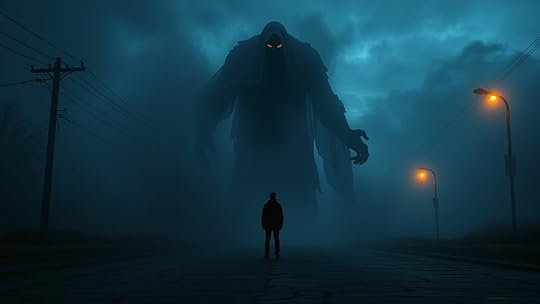
Monsters have long served as powerful metaphors in literature and culture, embodying fears, societal anxieties, and moral struggles. When you look at these creatures, you’re not just seeing fictional beings; you’re witnessing symbols that reflect the deepest parts of human experience. In many cases, monsters act as cultural symbolism, representing the collective fears of a society. For example, a beast lurking in folklore might symbolize the unknown dangers lurking beyond familiar borders or the anxiety about outsiders threatening social cohesion. These monsters encapsulate societal issues in a tangible form, allowing communities to confront and process their fears symbolically. By projecting their anxieties onto these figures, cultures create a manageable way to grapple with complex issues, turning abstract fears into concrete entities. Additionally, the diverse range of monster representations often aligns with specific cultural identities or traditional narratives, enriching their metaphorical significance.
At the same time, you can see how monsters serve as tools for psychological projection. When individuals or groups feel overwhelmed by internal conflicts or fears, they often project these feelings onto monsters, externalizing their anxieties. This process allows you to distance yourself from uncomfortable emotions, attributing them to an external villain rather than facing them internally. For instance, a villainous creature in a story might symbolize personal guilt, shame, or primal instincts that society deems threatening. By externalizing these feelings in the form of a monster, you can better understand your own internal struggles and societal taboos. This projection isn’t just personal; it’s collective. Societies project their moral and cultural fears onto monsters, which then serve as external representations of what must be controlled or eradicated. The monster becomes a mirror, reflecting societal values, taboos, and fears back to the community.
Furthermore, these representations influence how you interpret moral lessons within stories. When you see a monster as a metaphor, it’s often a warning about behaviors or traits that threaten societal stability. The fear of the monster embodies the collective dread of chaos, moral decay, or social collapse. By engaging with these symbols, you’re participating in a cultural dialogue about what is acceptable and what must be kept at bay. The monster, in this sense, is both a reflection of and a warning against the darker aspects of human nature and societal flaws. Its role as a metaphor makes it a crucial narrative device that helps you confront the anxieties that lurk beneath the surface of everyday life, revealing the underlying fears that shape human culture and psychology. Recognizing the behind monsters can deepen your understanding of their enduring relevance across different societies.
Frequently Asked QuestionsHow Do Cultural Differences Influence Monster Symbolism?Cultural differences shape how you interpret monster symbolism through unique cultural narratives and mythological influences. In some societies, monsters symbolize chaos or evil, reflecting historical fears, while in others, they embody protection or transformation. These stories influence what you see as threatening or misunderstood, shaping your perception of monsters. Your cultural background determines how you connect mythological influences and narratives to understand and respond to monster symbolism.
What Are the Psychological Effects of Monster Metaphors?You experience nightmare symbolism when monster metaphors surface, triggering deep fear processing. These symbols act as mirrors for your subconscious anxieties, helping you confront and understand hidden fears. As you face these metaphors, they can either heighten anxiety or promote resilience, depending on how you interpret them. Ultimately, they serve as a mental battleground, shaping your emotional responses and fostering personal growth through the processing of fear.
Can Monsters Represent Internal Human Conflicts?Yes, monsters can represent your internal conflicts, embodying your fear projection and identity struggles. When you see monsters in stories or dreams, they often reflect your hidden anxieties or parts of yourself you find difficult to accept. By confronting these monsters, you might better understand your internal fears, helping you work through your identity struggles and reduce the power of those fears over you.
How Have Modern Media Transformed Monster Symbolism?You see it everywhere—modern media has completely transformed monster symbolism, turning once simple fears into complex, layered stories. Through the power of visual effects and storytelling, media influence has fueled a symbolic evolution, making monsters represent everything from societal anxieties to personal struggles. This evolution keeps audiences hooked, as monsters now embody the deepest fears and hopes, morphing into reflections of our ever-changing world and inner conflicts.
Are There Real-World Events That Mirror Monster Allegories?Yes, real-world events often mirror monster allegories found in urban legends and folklore motifs. You might notice how stories of mysterious creatures or supernatural threats reflect societal fears, such as outbreaks of violence or political unrest. These legends serve as cautionary tales or warnings, embodying collective anxieties. When you see media amplifying these themes, it’s a modern reflection of how ancient monster symbolism continues to symbolize social fears.
ConclusionNow that you’ve seen how monsters embody our deepest fears, ask yourself: what monsters might we create when we ignore our societal issues? These creatures aren’t just stories—they’re reflections of the anxieties we refuse to face. By understanding their symbolism, you can better recognize the fears lurking beneath the surface of your own world. So, next time you see a monster, consider what it’s really telling you about the society we live in.

